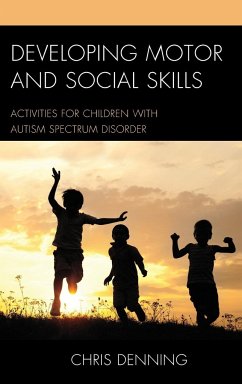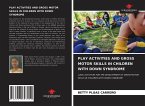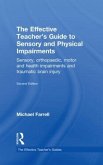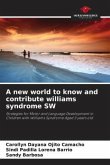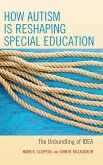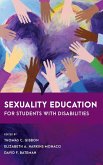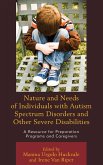Christopher Denning
Developing Motor and Social Skills
Activities for Children with Autism Spectrum Disorder
Christopher Denning
Developing Motor and Social Skills
Activities for Children with Autism Spectrum Disorder
- Gebundenes Buch
- Merkliste
- Auf die Merkliste
- Bewerten Bewerten
- Teilen
- Produkt teilen
- Produkterinnerung
- Produkterinnerung
This book will outline what we now know about how physical activity impacts children with Autism and how classroom teachers can use physical activity programs in their classrooms.
Andere Kunden interessierten sich auch für
![Disability and Motor Behavior Disability and Motor Behavior]() Disability and Motor Behavior137,99 €
Disability and Motor Behavior137,99 €![PLAY ACTIVITIES AND GROSS MOTOR SKILLS IN CHILDREN WITH DOWN SYNDROME PLAY ACTIVITIES AND GROSS MOTOR SKILLS IN CHILDREN WITH DOWN SYNDROME]() Betty Plúas CarreñoPLAY ACTIVITIES AND GROSS MOTOR SKILLS IN CHILDREN WITH DOWN SYNDROME26,99 €
Betty Plúas CarreñoPLAY ACTIVITIES AND GROSS MOTOR SKILLS IN CHILDREN WITH DOWN SYNDROME26,99 €![The Effective Teacher's Guide to Sensory and Physical Impairments The Effective Teacher's Guide to Sensory and Physical Impairments]() Michael FarrellThe Effective Teacher's Guide to Sensory and Physical Impairments165,99 €
Michael FarrellThe Effective Teacher's Guide to Sensory and Physical Impairments165,99 €![A new world to know and contribute williams syndrome SW A new world to know and contribute williams syndrome SW]() Carollyn Dayana Ojito CamachoA new world to know and contribute williams syndrome SW36,99 €
Carollyn Dayana Ojito CamachoA new world to know and contribute williams syndrome SW36,99 €![How Autism is Reshaping Special Education How Autism is Reshaping Special Education]() Mark K. ClaypoolHow Autism is Reshaping Special Education68,99 €
Mark K. ClaypoolHow Autism is Reshaping Special Education68,99 €![Sexuality Education for Students with Disabilities Sexuality Education for Students with Disabilities]() Sexuality Education for Students with Disabilities102,99 €
Sexuality Education for Students with Disabilities102,99 €![Nature and Needs of Individuals with Autism Spectrum Disorders and Other Severe Disabilities Nature and Needs of Individuals with Autism Spectrum Disorders and Other Severe Disabilities]() Nature and Needs of Individuals with Autism Spectrum Disorders and Other Severe Disabilities85,99 €
Nature and Needs of Individuals with Autism Spectrum Disorders and Other Severe Disabilities85,99 €-
-
-
This book will outline what we now know about how physical activity impacts children with Autism and how classroom teachers can use physical activity programs in their classrooms.
Hinweis: Dieser Artikel kann nur an eine deutsche Lieferadresse ausgeliefert werden.
Hinweis: Dieser Artikel kann nur an eine deutsche Lieferadresse ausgeliefert werden.
Produktdetails
- Produktdetails
- Verlag: Rowman & Littlefield Publishers
- Seitenzahl: 114
- Erscheinungstermin: 23. Mai 2017
- Englisch
- Abmessung: 235mm x 157mm x 11mm
- Gewicht: 328g
- ISBN-13: 9781475817645
- ISBN-10: 1475817649
- Artikelnr.: 47709789
- Herstellerkennzeichnung
- Libri GmbH
- Europaallee 1
- 36244 Bad Hersfeld
- gpsr@libri.de
- Verlag: Rowman & Littlefield Publishers
- Seitenzahl: 114
- Erscheinungstermin: 23. Mai 2017
- Englisch
- Abmessung: 235mm x 157mm x 11mm
- Gewicht: 328g
- ISBN-13: 9781475817645
- ISBN-10: 1475817649
- Artikelnr.: 47709789
- Herstellerkennzeichnung
- Libri GmbH
- Europaallee 1
- 36244 Bad Hersfeld
- gpsr@libri.de
Christopher Denning, PhD, is Assistant Professor of Special Education, Department of Curriculum and Instruction, College of Education and Human Development, University of Massachusetts, Boston.
Dedication Table of Figures Table of Tables Preface Acknowledgements
Introduction Chapter 1 Key questions What do children with ASD need to
succeed in school? Evidence-based strategies and supports Universal design
for learning Visual supports Routines and procedures Priming Choice
Takeaways References Chapter 2 Key questions Importance of motor
development and physical activity Challenge for children with ASD Benefits
of increased motor development and physical activity Optimizing the effects
of physical activity and exercise Takeaways References Chapter 3 Key
questions Links between motor and social development Implications for
classroom performance and support Takeaways References Chapter 4 Key
questions Key ideas for organization Structure Setting Materials Frequency
and duration Child/adult ratio Instructional methodologies Universal design
for learning Activity schedules Priming Visual supports Modeling and guided
practice Routines and procedures Social narratives Other considerations
References Chapter 5 What does it look like? Aerobic exercise or physical
activity How can I do it? Aerobic exercise or physical activity? Activities
for physical activity/aerobic exercise Motor development and complex motor
movements Activities for motor development and complex motor movements
Meditation or calming activity Activities for meditation or calming
activity Where can I get more information? Takeaways References Chapter 6
Key questions Selection of target skills Supporting skills in the classroom
Environmental modifications Positive reinforcement Picture schedules
Priming or previewing Modeling and role play Scripts or cue cards Social
narratives Peer mediated interventions Takeaways References Chapter 7 Key
questions Collaborating with families Support Communication Participation
Feedback IEP goals Collaborating with other professionals Physical
education Occupational therapists Paraprofessionals Takeaways References
Introduction Chapter 1 Key questions What do children with ASD need to
succeed in school? Evidence-based strategies and supports Universal design
for learning Visual supports Routines and procedures Priming Choice
Takeaways References Chapter 2 Key questions Importance of motor
development and physical activity Challenge for children with ASD Benefits
of increased motor development and physical activity Optimizing the effects
of physical activity and exercise Takeaways References Chapter 3 Key
questions Links between motor and social development Implications for
classroom performance and support Takeaways References Chapter 4 Key
questions Key ideas for organization Structure Setting Materials Frequency
and duration Child/adult ratio Instructional methodologies Universal design
for learning Activity schedules Priming Visual supports Modeling and guided
practice Routines and procedures Social narratives Other considerations
References Chapter 5 What does it look like? Aerobic exercise or physical
activity How can I do it? Aerobic exercise or physical activity? Activities
for physical activity/aerobic exercise Motor development and complex motor
movements Activities for motor development and complex motor movements
Meditation or calming activity Activities for meditation or calming
activity Where can I get more information? Takeaways References Chapter 6
Key questions Selection of target skills Supporting skills in the classroom
Environmental modifications Positive reinforcement Picture schedules
Priming or previewing Modeling and role play Scripts or cue cards Social
narratives Peer mediated interventions Takeaways References Chapter 7 Key
questions Collaborating with families Support Communication Participation
Feedback IEP goals Collaborating with other professionals Physical
education Occupational therapists Paraprofessionals Takeaways References
Dedication Table of Figures Table of Tables Preface Acknowledgements
Introduction Chapter 1 Key questions What do children with ASD need to
succeed in school? Evidence-based strategies and supports Universal design
for learning Visual supports Routines and procedures Priming Choice
Takeaways References Chapter 2 Key questions Importance of motor
development and physical activity Challenge for children with ASD Benefits
of increased motor development and physical activity Optimizing the effects
of physical activity and exercise Takeaways References Chapter 3 Key
questions Links between motor and social development Implications for
classroom performance and support Takeaways References Chapter 4 Key
questions Key ideas for organization Structure Setting Materials Frequency
and duration Child/adult ratio Instructional methodologies Universal design
for learning Activity schedules Priming Visual supports Modeling and guided
practice Routines and procedures Social narratives Other considerations
References Chapter 5 What does it look like? Aerobic exercise or physical
activity How can I do it? Aerobic exercise or physical activity? Activities
for physical activity/aerobic exercise Motor development and complex motor
movements Activities for motor development and complex motor movements
Meditation or calming activity Activities for meditation or calming
activity Where can I get more information? Takeaways References Chapter 6
Key questions Selection of target skills Supporting skills in the classroom
Environmental modifications Positive reinforcement Picture schedules
Priming or previewing Modeling and role play Scripts or cue cards Social
narratives Peer mediated interventions Takeaways References Chapter 7 Key
questions Collaborating with families Support Communication Participation
Feedback IEP goals Collaborating with other professionals Physical
education Occupational therapists Paraprofessionals Takeaways References
Introduction Chapter 1 Key questions What do children with ASD need to
succeed in school? Evidence-based strategies and supports Universal design
for learning Visual supports Routines and procedures Priming Choice
Takeaways References Chapter 2 Key questions Importance of motor
development and physical activity Challenge for children with ASD Benefits
of increased motor development and physical activity Optimizing the effects
of physical activity and exercise Takeaways References Chapter 3 Key
questions Links between motor and social development Implications for
classroom performance and support Takeaways References Chapter 4 Key
questions Key ideas for organization Structure Setting Materials Frequency
and duration Child/adult ratio Instructional methodologies Universal design
for learning Activity schedules Priming Visual supports Modeling and guided
practice Routines and procedures Social narratives Other considerations
References Chapter 5 What does it look like? Aerobic exercise or physical
activity How can I do it? Aerobic exercise or physical activity? Activities
for physical activity/aerobic exercise Motor development and complex motor
movements Activities for motor development and complex motor movements
Meditation or calming activity Activities for meditation or calming
activity Where can I get more information? Takeaways References Chapter 6
Key questions Selection of target skills Supporting skills in the classroom
Environmental modifications Positive reinforcement Picture schedules
Priming or previewing Modeling and role play Scripts or cue cards Social
narratives Peer mediated interventions Takeaways References Chapter 7 Key
questions Collaborating with families Support Communication Participation
Feedback IEP goals Collaborating with other professionals Physical
education Occupational therapists Paraprofessionals Takeaways References

